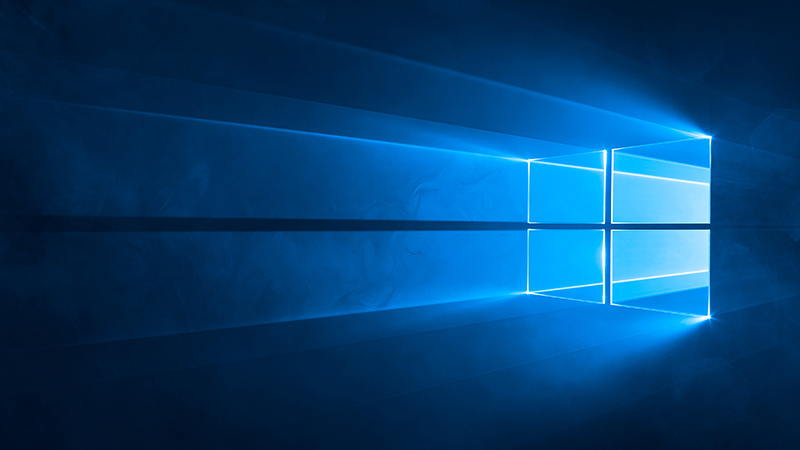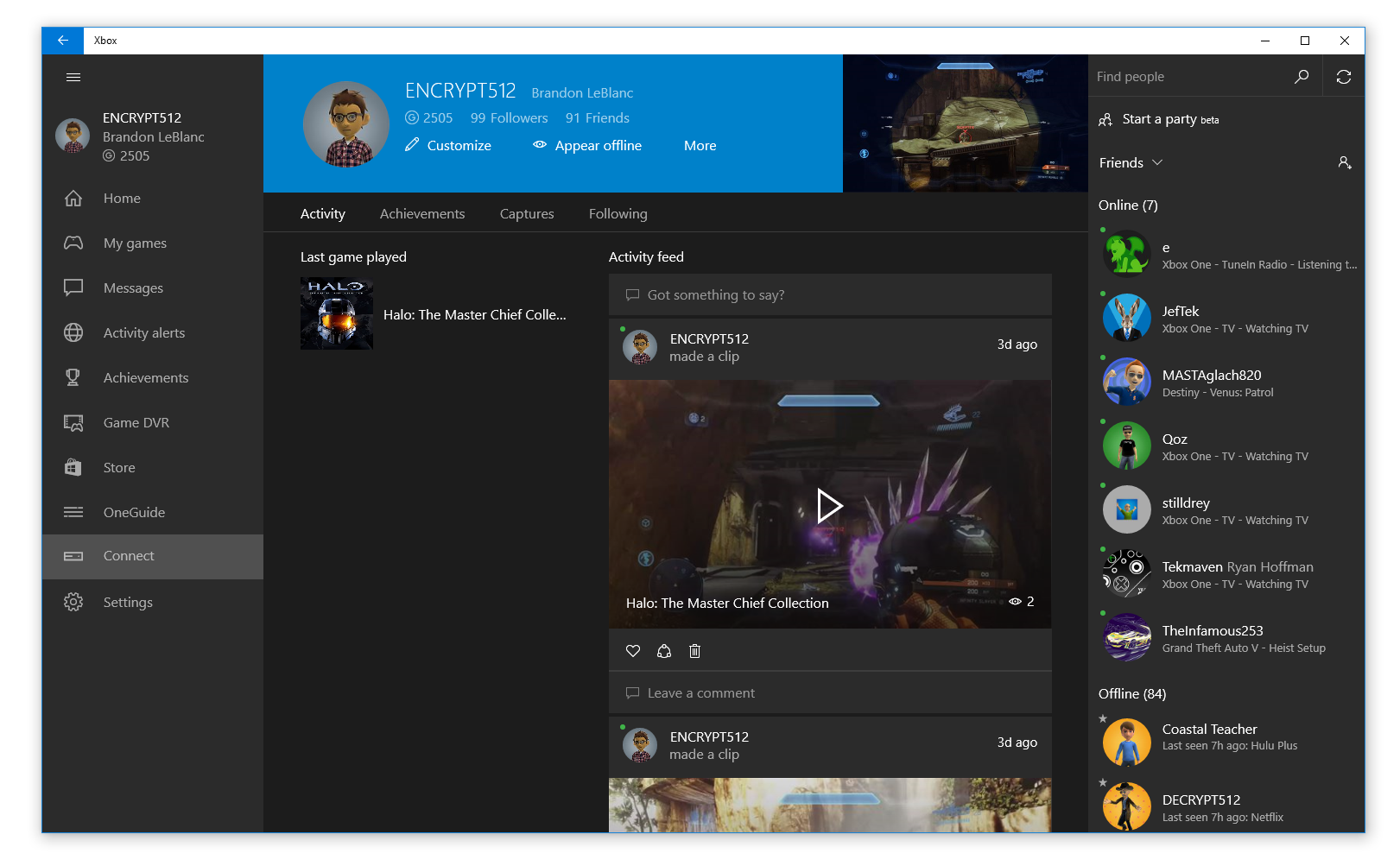Microsoft Brings Xbox In-Game Streaming For Windows 10
The release of Windows 10 is less than two weeks away now, and as Microsoft counts down the days until the release, the company is also scrambling to push out as many features for the new OS as possible. Microsoft hopes that a new feature announced for Windows 10 and Xbox One will keep gamers on Windows.
Microsoft has developed a streaming service that will allow gamers to stream games from the Xbox One to PCs and tablets running Windows 10. It's worth noting that this will allow Microsoft to bring a feature that competes against the likes of Nvidia Shield devices and accompanying GRID service. The Nvidia Shield devices are cheaper than an Xbox One, and the GRID service gets you several games for less than a single new Xbox One game will cost. Over time, though, users who own a Windows 10 compatible PC may find the Xbox One to be more affordable, as it doesn't require a monthly subscription to play games, but initially Nvidia certainly has the advantage.
To enable streaming, simply go to the Xbox One's Preferences and enable the streaming service. On the PC side (a Windows 10 tablet will also work), users need to connect to the Xbox One inside of the Xbox app. After that, you're all set.
Microsoft updated several other features of the Xbox app, too. The social networking experience already present in the Xbox Live community has expanded, allowing users to now chat with each other through the app while one uses a Windows 10 device. Users can also edit their avatars, profiles, and other aspects of their Xbox Live account with the application.
Another important feature that Microsoft improved with this application is the ability to record and share game footage. Previous game consoles, such as the Xbox 360 and Playstation 3, required additional hardware components to be able to record game footage. When the Xbox One and Playstation 4 came out, Microsoft and Sony took note of gamer interest in sharing game footage and opted to allow the consoles to record game footage and share it on the Internet.
This application doesn't replace Microsoft's Game DVR feature, but it does help to expand on it. The application pulls game footage from the Xbox One and transfers it to the Windows 10 device. Here, users have a much wider arrange of editing tools, allowing users to do much more with their videos than the Xbox One could do alone.
Microsoft has had a tough couple of years as far as gamers are concerned. AMD released its Mantle API, which not only gave improved performance, but saved game developers from having to pay to use Microsoft's DirectX API. When it was time for new game consoles to be released, Sony offered a more powerful console at a lower price, and subsequently outsold Microsoft's Xbox One. Finally, Valve's new Steam OS, followed by numerous Steam gaming systems, are coming, and they threaten to steal a portion of the gaming market away from Microsoft.
Get Tom's Hardware's best news and in-depth reviews, straight to your inbox.
Microsoft has attempted to resolve all of these problems in one form or another. The Xbox One has seen several price drops, and Windows 10 promises improved performance with the DirectX 12 API, but for all of Microsoft's efforts, the gaming market is still a cutthroat business.
This streaming service looks to be one of the best features Microsoft has developed for Windows 10, as it has the potential to significantly grow sales of the Xbox One game console. Many gamers want to be able to play their games anywhere, which is why Nvidia's system has been popular. Sony currently has the PlayStation Now service that can stream to other Sony devices and select Samsung Smart TVs, but the range of devices this is available on are significantly fewer, and users are more likely to own a Windows 10 PC or tablet than certain select brands and models of TVs. Microsoft added this service later than its competition, but thanks to the likely rapid proliferation of Windows 10 devices, it will likely be more widely used than any of the others.
In any case, this is likely to be a heavily-used feature of the new Windows 10 OS. It will be interesting to see if Sony tries to expand its PlayStation Now service with similar software to better compete against Microsoft's new services.
Update, 7/20/15, 11:05pm PT: A previous version of this article had several critical errors. They have been removed, and copy has been added.
Follow Michael Justin Allen Sexton @LordLao74. Follow us @tomshardware, on Facebook and on Google+.
-
sirencall BY additional components for game capture on the PS4 do you mean a PS4 controller. Last I checked I have been able to capture my in game footage and upload it to youtube for some time. At the least to some capacity since its launch. Are you intentionally being misleading?Reply -
sirencall And you can stream to twitch and whichever other service supports live feeds to as far as I know.Reply -
IInuyasha74 Yes, I was slightly misinformed about this. I knew that the Xbox 1 and PS4 had the ability to record game footage already, but was under the impression this footage was locked onto the console and could only be really used on services provided by Microsoft and Sony respectively, so on this part I was a bit miss informed.Reply
It still gives an edge allowing you to go ahead and send that data over to a PC or tablet and lets you play the game on those devices too, so that is still an improvement. -
alextheblue ReplyNvidia has a clear advantage in price
Not if you already own a PC and an Xbox! I have no use for the Nvidia gear, already have a PC, and am considering picking up an Xbox One around Christmas if there's a good bundle with a 1TB model.
Still, there is an obvious downside to using this streaming service as opposed to dedicated hardware. Video footage consumes loads of bandwidth, and if you are playing online, you will likely see performance drops.
BS alert! Modern wired/wireless networks have gobs of bandwidth, if you're streaming from your XB1 to your PC you're not even relying on your internet, just the local network. If you're streaming outside your network to twitch or whatever, you'll need decent internet but that's nothing new. -
buxxcador I'm deeply annoyed by not being able to remove a ton of apps from Windows 10, the xbox ones included.Reply
I do not have an Xbox, and his app runs in the background consuming resources and SSD space.
That's is unacceptable. -
ubercake It will be nice and convenient to be able to play the Xbox quality games through a cheap laptop.Reply
What would be really nice is to be able to take the superior PC-quality games from my gaming PC and stream those to the Xbox. I wonder why they don't even mention this capability on the horizon? Why won't we be able to stream both ways? -
red77star There is better thing. High Quality PC Games streaming through In Home Streaming option in Steam to cheap laptop. Some people don't even know XBOX One. I guess this is all just to promote XBOX One Gaming, there is nothing for PC here. Just to let you guys know that if your Video Card is not newer Nvidia or AMD your DXDIAG in Windows 10 will say Windows 8.2. DX12 is next big BS after DX10 fiasco with Vista.Reply -
ubercake I think we're past the Vista fiasco in general. That whole OS was a fiasco. Windows 7 was the correction of that situation.Reply -
rluker5 ReplyNvidia has a clear advantage in price
Not if you already own a PC and an Xbox! I have no use for the Nvidia gear, already have a PC, and am considering picking up an Xbox One around Christmas if there's a good bundle with a 1TB model.
Still, there is an obvious downside to using this streaming service as opposed to dedicated hardware. Video footage consumes loads of bandwidth, and if you are playing online, you will likely see performance drops.
BS alert! Modern wired/wireless networks have gobs of bandwidth, if you're streaming from your XB1 to your PC you're not even relying on your internet, just the local network. If you're streaming outside your network to twitch or whatever, you'll need decent internet but that's nothing new.
Takes more bandwidth to stream games. Try it with steam. Wireless n won't give me more than 720p@60 :(

